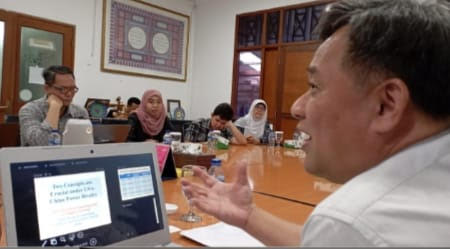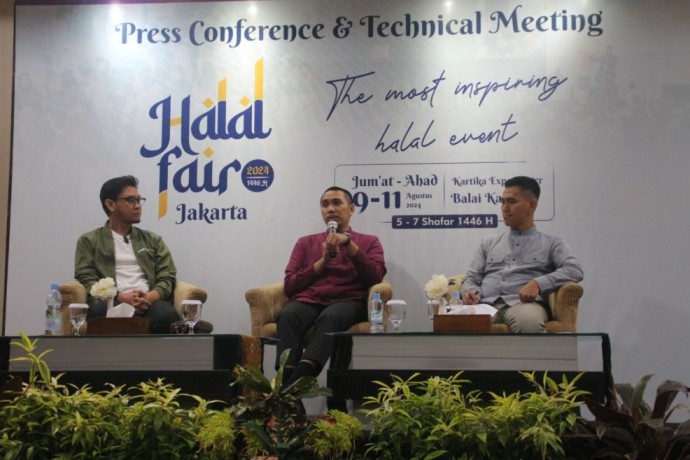Feature – Taiwan leading in semiconductor technology

The semiconductor technology development has made Taiwan one of the leaders in the sector and are involved in innovation, research, development and collaboration with companies around the world.
Jakarta, (Indonesia Window) – Partnerships among the government sector, industry and research institutions have ensured that Taiwan remains relevant in the semiconductor technology development.
”Taiwan’s semiconductor supply chain involves companies at various levels of production. Many steps of semiconductor production are performed in Taiwan, from chip design to fabrication, packaging and testing. This provides flexibility and efficiency to meet demand worldwide,” said Prof. Jenn-Jaw Soong from National Cheng Kung University, Taiwan.
A press release from Paramadina University recently received by Indonesia Window pointed out that Prof. Soong, who spoke at the 14th Series of the Paramadina Democracy Forum (PDF), discussed Rivalry in the Indo-Pacific Region: Lessons from Taiwan and Indonesia.
Taiwan is known as one of the world’s leading centers of the semiconductor technology development, innovation and technological advancement and has a leading role in the semiconductor industry.
Several factors make Taiwan the center of the semiconductor industry including TSMC (Taiwan Semiconductor Manufacturing Company), innovation and R&D, integrated supply chain, workforce expertise, and global partnerships.
Overall, Taiwan plays an important role in the semiconductor industry in addition to physical chip production; It also engages in innovation, research, development and collaboration with companies around the world, which contributes to the dynamics of the semiconductor industry globally.
TSMC is the world’s largest semiconductor manufacturing company and provides semiconductor fabrication services to companies around the world, including leading chip manufacturers such as AMD, Apple, and Nvidia.
The company plays a critical role in providing the advanced manufacturing technology used to produce the latest and greatest chips. There are many companies and research institutes in Taiwan that are very active in semiconductor R&D.
Prof. Soong further said Taiwan has a skilled workforce and technical expertise in semiconductor technology. Top universities in Taiwan offer educational programs that support the development of skills required in the semiconductor industry.
”Global partnerships are carried out to gain access to the latest technology and global markets. Taiwanese semiconductor companies have established strategic partnerships with global companies. This includes working with chip design companies, production equipment suppliers and other partners,” he said.
Computer chips, or semiconductors, connect the digital and physical worlds, and are critical to the country’s technological independence. Countries that control the production of this important resource have a greater impact on other countries. Taiwan’s chip industry plays an important role in the global economy.
Taiwan is one of the most sophisticated semiconductor production bases in the world. Taiwan has an extensive semiconductor industry cluster. Semiconductor manufacturing has been identified as an important sector in national development to improve industry, achieve an innovative economy, and take advantage of development opportunities in the digital era.
Taiwan, often referred to as the ‘Silicon Valley of the East’, has developed into the world’s most successful technology hub over the past two decades.
Notably, TSMC has served as a technology hub. The economy is not the only factor that influences the growth and development of a country.
Improving the quality of people’s lives, social inclusion, and human resource development are also important factors.
In the book titled ‘Kebangkitan Indonesia: dari Keberagaman Menuju Pembangunan Terpadu’ (Indonesia’s Awakening: from Diversity to Integrated Development), there are several important elements that can be focused on to advance Indonesia as a whole, such as high quality education, local economic empowerment, innovation and technology, sustainable management of natural resources, health and welfare, and international cooperation.
“Integrated development requires good coordination among the government, the private sector, civil society and educational institutions. By strengthening this foundation, Indonesia can lead to a sustainable and inclusive revival,” Prof. Soong noted.
Integrated development would depend on investment in high-quality education. Improving access, quality and relevance of education would help produce excellent human resources ready to compete in the global era.
National economic competitiveness can be increased by developing the local economy and supporting small and medium enterprises (SMEs).
Programs such as microfinance, skills training and market access can increase the economic capacity of communities in various regions. Improving efficiency in various industries, such as agriculture, manufacturing and services, can be achieved by encouraging innovation and the use of contemporary technology.
Increased investment in R&D is expected to strengthen global competitiveness and open up new opportunities.
Improving people’s welfare would be achieved through increasing access and quality of health services, including disease prevention efforts and developing health infrastructure.
In addition, productivity and economic development are influenced by good health. Indonesia gets assistance in progressing various fields by building strong partnerships with other countries and international institutions. The positive impact of the exchange of knowledge, investment and technology is increased economic growth.
Indonesia and India are developing rapidly. In the last ten years, India’s gross domestic product (GDP) has grown by 71 percent, while GDP has grown by 52 percent. India and Indonesia are building ambitious infrastructure, as both countries are very open, he said.
According to him, trade contributes around 40 percent of GDP, and foreign direct investment inflows contribute around 1.5 percent of GDP.
Indonesia has built 18 ports, 21 airports and 1,700 kilometers of toll roads since the country’s President Joko Widodo took office. On the other hand, India has built 10,000 kilometers of highways every year.
The average gross national income per person in Indonesia is 4,180 US dollars, about half of India’s gross national income.
Reporting by Indonesia Window










